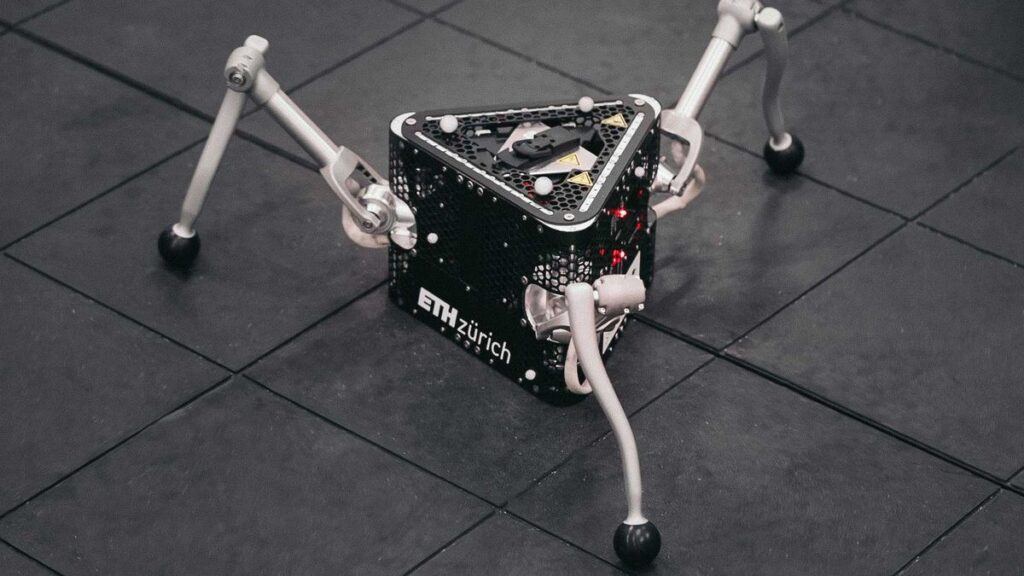As humanity’s ambitions in space exploration continue to grow, so too does the need for innovative technologies that can help us explore new frontiers. One such breakthrough is the development of the space hopper robot, a novel type of robotic explorer designed to traverse the challenging terrains of other planets, moons, and asteroids. Unlike traditional rovers, which rely on wheels or tracks, the space hopper robot uses a unique hopping mechanism to move across uneven and unpredictable landscapes, making it an ideal tool for exploring some of the most inaccessible parts of our solar system.
The Need for Innovation in Space Exploration
Exploring other planets and celestial bodies is fraught with challenges. Harsh environments, extreme temperatures, and unpredictable terrains all pose significant obstacles for traditional wheeled rovers. These conditions can limit the areas that rovers can explore, especially in regions with steep cliffs, deep craters, or loose, rocky surfaces.
The space hopper robot offers a solution to these limitations. By using a hopping motion, it can navigate obstacles that would be impossible for wheeled vehicles to overcome. This capability not only expands the areas that can be explored but also increases the chances of discovering new and important scientific data.
How the Space Hopper Robot Works
The space hopper robot operates on a simple yet effective principle: it stores energy in a spring-like mechanism or a set of compressed air thrusters, which is then released to propel the robot into the air. Depending on the design, this energy can come from mechanical springs, compressed gas, or even electromagnetic systems. The robot can then “hop” across the surface of a planet or moon, covering distances much greater than those achieved by traditional rovers.
The hopping mechanism allows the robot to avoid small obstacles, such as rocks or crevices, and it can even jump over larger obstacles, like boulders or cliffs. This ability to move vertically as well as horizontally makes the space hopper robot incredibly versatile, enabling it to explore a wider range of terrains.
Moreover, the space hopper robot is designed to withstand the harsh conditions of space. Its lightweight structure is built from durable materials that can endure extreme temperatures, radiation, and the vacuum of space. The robot is also equipped with advanced sensors and cameras to capture high-resolution images and gather scientific data as it moves.
Applications of the Space Hopper Robot
The space hopper robot has the potential to revolutionize planetary exploration by allowing scientists to study areas that have previously been inaccessible. For instance, on the Moon, the robot could explore deep craters that may contain water ice, a critical resource for future lunar missions. On Mars, it could traverse the planet’s vast canyons and mountainous regions, searching for signs of past or present life.
One of the most exciting applications of the space hopper robot is its potential to explore asteroids and other small celestial bodies. These objects often have irregular shapes and weak gravitational fields, making them difficult to explore with traditional rovers. The space hopper robot’s ability to hop across these surfaces could allow it to collect samples, study the composition of these bodies, and help us better understand the early solar system.
Additionally, the space hopper robot could be used in collaborative missions with other robotic explorers. For example, it could work alongside traditional rovers, acting as a scout to identify interesting features or potential hazards, or it could be deployed in swarms, with multiple hoppers working together to cover large areas quickly.
Challenges and Future Development
While the space hopper robot holds great promise, there are still challenges to be addressed. For one, the robot’s hopping motion must be carefully controlled to ensure it lands accurately and avoids damaging itself upon impact. Engineers are working on advanced guidance and control systems to enhance the robot’s stability and precision during its hops.
Another challenge is ensuring the robot’s longevity and energy efficiency. Hopping requires a significant amount of energy, and in the remote and harsh environments of space, recharging or replenishing power sources is not always feasible. To address this, researchers are exploring energy-efficient designs and ways to harvest energy from the environment, such as using solar panels or thermal generators.
As development continues, there is also a need to test the space hopper robot in realistic environments. Simulating the conditions of other planets and moons here on Earth is difficult, but essential for refining the robot’s design and capabilities. Future missions to the Moon or Mars could serve as testbeds for this technology, helping to demonstrate its effectiveness and reliability.

